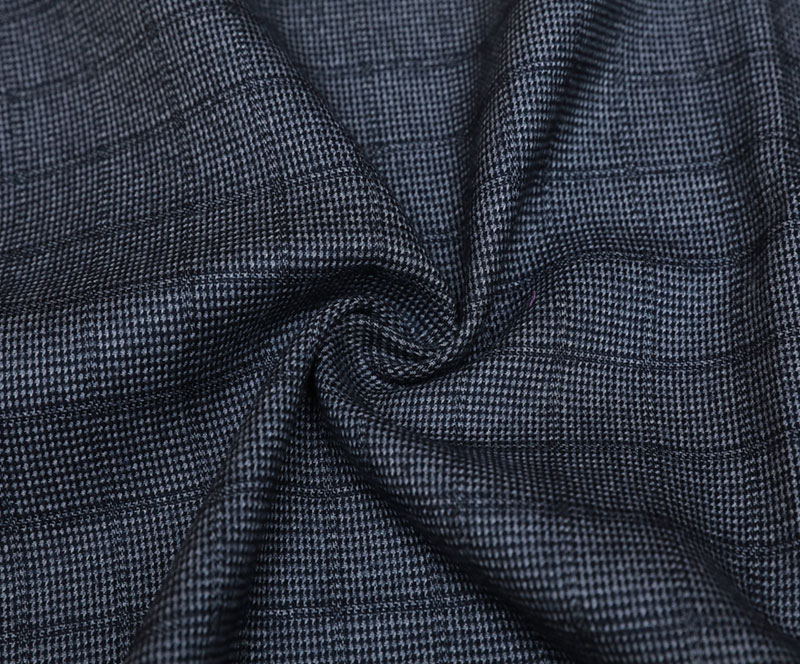

How to identify suit fabric What are the suit fabrics? […]
How to identify suit fabric
What are the suit fabrics? How to identify suit fabrics? For suits, fabrics and accessories are very important, but the quality of a suit is determined by the lining, because it can link fabrics and accessories, two materials with completely different ductility.
The relatively cheap and suitable method for ready-made clothing is to use fusible interlining. After a low-grade fusible interlining suit is worn for a period of time, the fabric and accessories of the suit will no longer fit together and pull each other in another direction.
A good lining should be made of natural materials such as wool, linen, and horsehair. The purpose is that when the fabric and accessories of the suit are running around, they can move around to a limited extent and help them reset. A good suit must have a good lining, which can be sewn with a lapels by hand. Only such a suit will have a three-dimensional arc like armor. Of course, such a lining is by no means cheap.
Fabric aspect
The main factor that determines the price of fabrics is the place of origin. The prices of domestic fabrics and imported fabrics vary greatly. Imported fabrics are mainly concentrated in Italy and the United Kingdom.
Whether you use domestic or imported fabrics, the ingredients are basically wool, and of course other ingredients, such as cashmere, but high-quality fabrics use natural fabrics instead of synthetic materials. What you need to remember is that sometimes you write With cashmere, the quality level is far different. Usually, the prices of domestic fabrics in various domestic custom-made stores are reasonable, and of course they are also cheaper. This is why we see some ready-made suits with prices lower than 200 RMB.
Identification of pure wool fabric
Pure wool fabrics are natural and soft in color and have good warmth retention. It is the first choice for making high-end suits and coats. But now there are more and more imitation wool fabrics. With the improvement of textile technology, it has reached a level that most customers are difficult to identify, but the color, warmth, and feel are far less than pure wool fabrics. Here are several ways to identify pure wool fabrics for your reference when choosing clothing and fabrics.
1. Feeling
Pure wool fabrics usually feel soft and smooth, and long-haired fabrics feel smooth to the touch and feel tingling against the hair. And some blended or purified fiber products are not soft, some are too soft and loose, and have a sticky feeling.
2. Look at the color
The color of pure wool fabric is natural and soft, bright and not old. In contrast, blended or purified fiber fabrics have darker gloss or a sense of flashing color.
3. Look at flexibility
Hold the fabric tightly with your hands, and then immediately let go to see the fabric elasticity. Pure wool fabrics have a high resilience rate and can quickly return to their original shape, while blended or chemical fiber products have poor wrinkle resistance, mostly leaving obvious wrinkle marks or slow recovery.
4. Identification of combustion method
Take a bunch of yarn and burn it with fire. Pure wool fiber smells like burning hair, and chemical fiber fabric smells like burning plastic. The harder the burned particles, the more chemical fiber content.
5. Single root identification
All animal hairs are scaly under the microscope. If it is a long-haired fabric, just take a hair and rub it a few times and it will move up or down (in order to master this technique, you can first test with a hair), if It is an ordinary fabric. Take a piece of yarn, cut two 2 cm sections and split them into one fiber. Rub it four or five times in the palm of your hand to see if they move.
Wool blend fabric
Wool blended fabrics are fabrics made by mixing cashmere, polyester, spandex, rabbit hair and other fibers with wool. Wool and polyester blended fabric, under the sun, the surface has shining points, the fabric is stiff and hard, and has good elasticity. It is loosened after gripping the fabric, and there are almost no wrinkles.
Main categories:
1. Rabbit fur
Generally, a certain proportion of rabbit hair and wool blended fabric is used. Rabbit sweaters are characterized by thin fibers, smooth hand feel, fluffy surface, soft color, good fluffy, comfortable and chic wearing, and the surface fluff is easy to fall off during wearing, and it keeps warm. Better than wool clothing.
2. Chemical fiber wool
The breaking strength of the fiber is higher than that of wool fiber, and it will not be eaten by insects, but its elastic recovery rate is lower than that of wool, and its warmth retention is not as good as that of pure woolen sweater. It is cheap, but easy to pilling.
3. Wool blended with animal hair and chemical fiber
It has the "complementary characteristics" of various animal hair and chemical fibers, its appearance is woolly, its tensile strength is improved, and the cost of sweaters is reduced. It is a high-quality and inexpensive product. However, in blended sweaters, there is the problem of unsatisfactory dyeing effects due to the different dyeing and color absorption capabilities of different types of fibers. Purified fiber imitation wool
It has the natural style characteristics of natural fiber. Bright color, good gloss, crisp, elastic, suitable for the public.
https://www.hzmengda.com/
